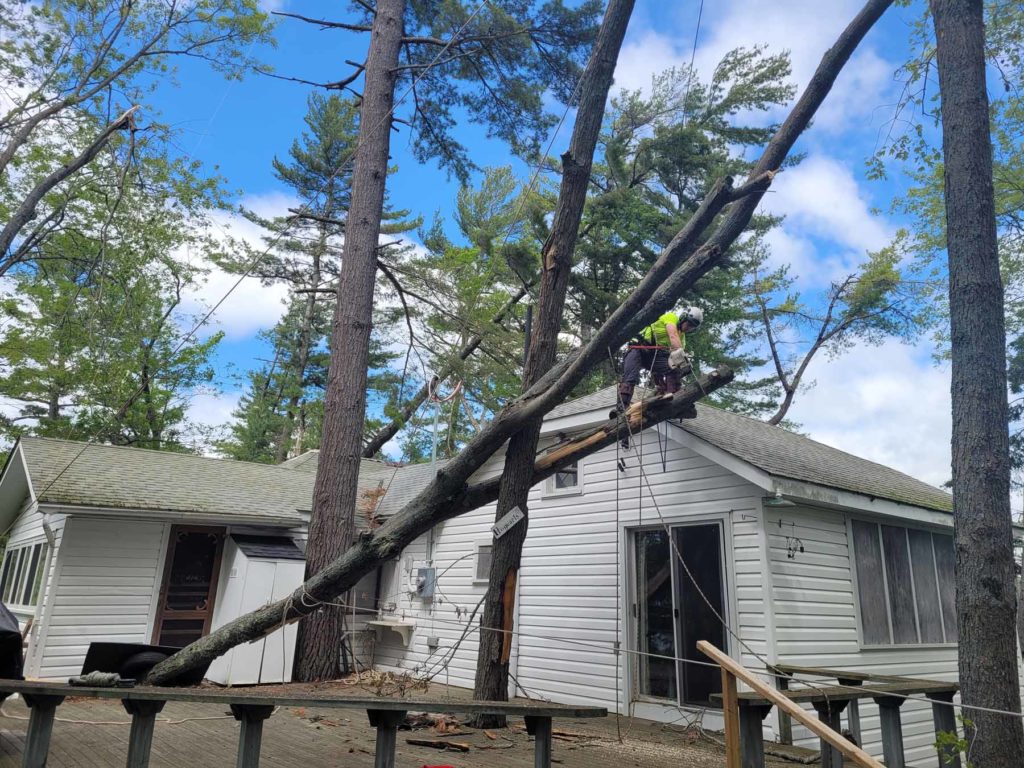Storm-damaged Trees – What should you do?

When a powerful storm blows through, it can leave behind storm-damaged trees on your property. Whether it’s broken branches, uprooted trunks, or structural damage, dealing with tree damage can be overwhelming for homeowners. However, knowing the right steps to take can help mitigate further risks and ensure the safety of your property. Below, we will outline the essential steps a homeowner should take after their tree is damaged by a storm.
- Assess the Damage:
The first step is to carefully assess the extent of the damage. Look for any broken branches, split trunks, or uprooted trees. Take note of any potential hazards, such as dangling limbs or leaning trees, that could pose a danger to people or property. - Ensure Safety:
Safety should always be the top priority. Keep family members and pets away from the damaged area until it has been properly assessed and secured. If there are any immediate safety concerns, such as downed power lines or unstable trees, contact local authorities or a professional tree service for assistance. - Document the Damage:
Take photographs of the damage for insurance purposes. Document the condition of the tree, any surrounding structures that may have been affected, and any visible signs of damage to your property. This documentation will be invaluable when filing an insurance claim. - Contact Your Insurance Provider:
Notify your insurance provider as soon as possible to report the tree damage. Provide them with detailed information about the extent of the damage and any documentation you have gathered. They will guide you through the claims process and advise you on the coverage available for tree damage. - Hire a Professional Arborist:
It’s essential to enlist the expertise of a professional arborist to assess the damage and determine the best course of action. They can evaluate the tree’s health and structural integrity, recommend appropriate measures for repair or removal, and safely carry out any necessary tree work. - Consider Tree Removal or Pruning:
Depending on the severity of the damage, the arborist may recommend either tree removal or pruning. In cases where the tree is severely damaged or poses a safety hazard, removal may be the safest option. Alternatively, if the tree can be salvaged, pruning may help promote its recovery and prevent further damage. - Follow Local Regulations:
Be sure to familiarize yourself with any local regulations or ordinances governing tree removal and disposal. Some areas, like the City of Peterborough, require a permit for tree removal. - Plan for Tree Replacement:
If the damaged tree needs to be removed, consider planning for its replacement. Choose a suitable species that is well-suited to your climate and property conditions. Plant the new tree in a location that allows for proper growth and development, taking into account factors such as sunlight, soil quality, and spacing.
Dealing with storm-damaged trees can be a daunting task, but taking prompt and proactive steps can help minimize further risks and ensure a swift recovery. By assessing the damage, ensuring safety, consulting professionals, and following proper procedures, homeowners can effectively manage tree damage and safeguard their property for the future. Remember, when it comes to tree care and maintenance, safety always comes first.
Contact us at 705.657.6916 or email [email protected] for assistance.
Find more information about our services by clicking here.

